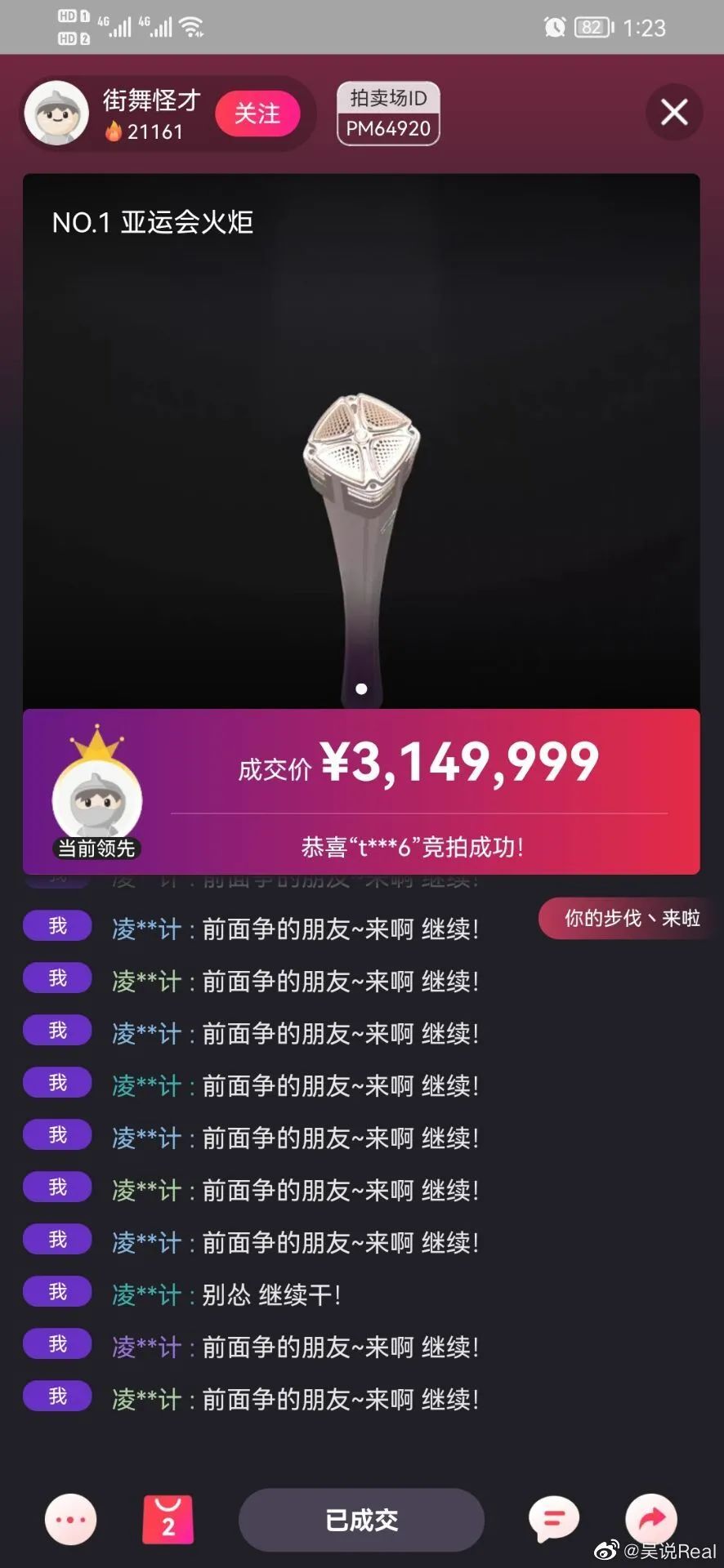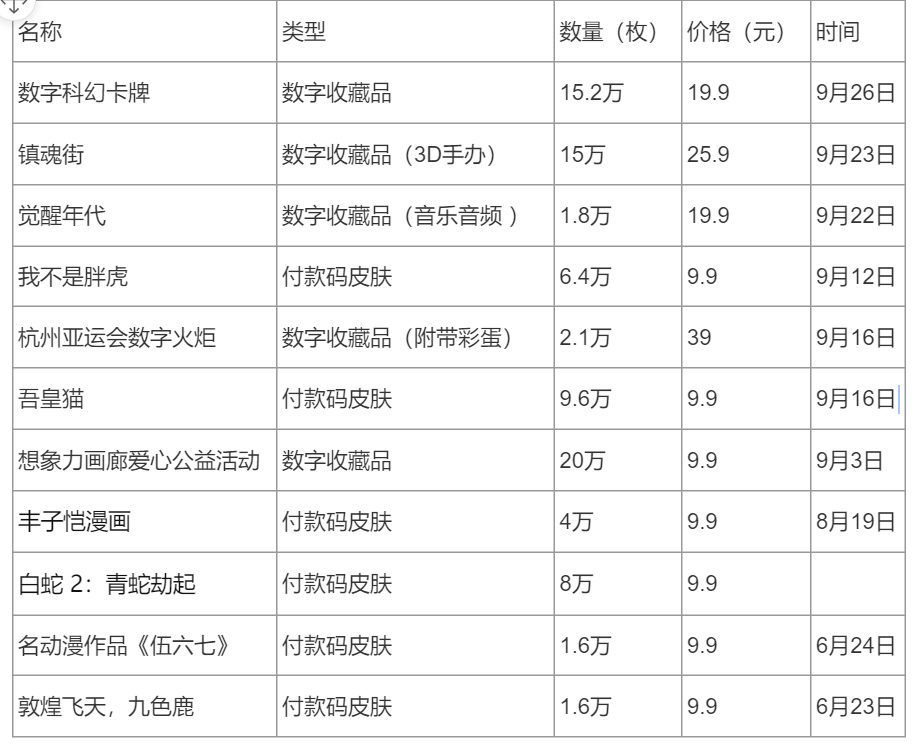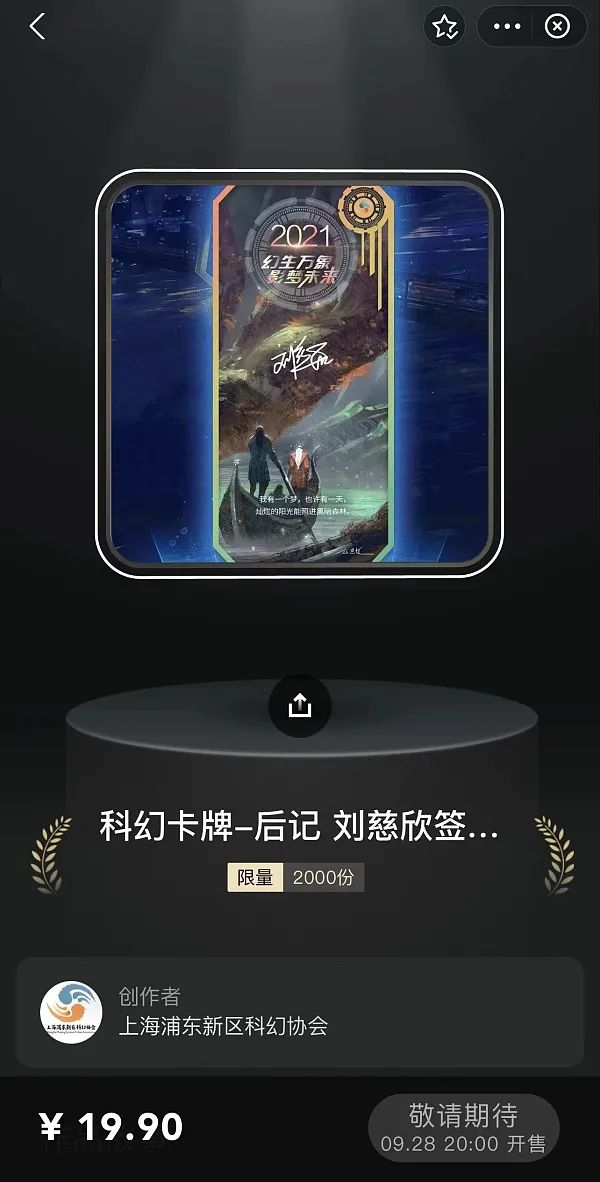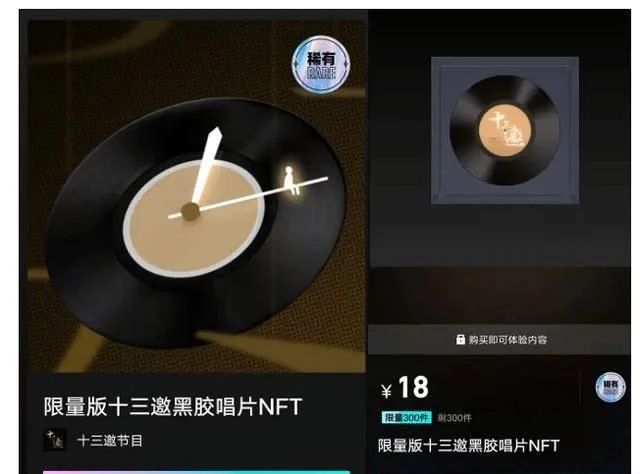image description

The picture comes from Weibo user @吴说Real
However, based on the rules of the Ali auction platform, the default cost for users to participate in the auction but give up the purchase in the end is very low, so the price does not have market guiding significance. Even so, Ali Auction officials quickly removed the auction and issued a statement saying: Blockchain-based digital collections are still being explored, but we firmly oppose all forms of hype.
The statement also mentioned that AntChain fan tablets currently only support holders of digital collections, which can be transferred to qualified Alipay real-name friends free of charge after 180 days of holding. Hype in disguise.
With the popularity of metaverse and digital art concepts, in addition to OpenSea and other public chain-based trading platforms that have become popular in the blockchain world, in China, Alipay and Tencent have launched their own digital art projects, namely Alipay Small program fan grains and magic core APP.
These may be the two most influential digital art distribution platforms in China at present. This article tries to sort out, after 3 months of operation, what are the characteristics of the digital artworks issued by these two platforms, and whether this will be the path for the compliant development of digital artworks in the future.
alipay vermicelli
Digital artworks, digital figures, payment code skins... more blossoms
So far, we have found that Alipay has sold more than 10 digital art-related products. The basic data are as follows:

Alipay’s digital art sale began on June 23. On that day, an Alipay mini-program called Fanliu released Dunhuang-themed digital art. At that time, the digital art product was sold out almost instantly, allowing the platform of Fanli to quickly enter the public eye.
Judging from the digital art products sold by the 11 fan grains in the above statistics, they mainly include two types, namely Alipay’s payment code skin and digital collections. Digital collections can be subdivided into digital artworks, digital artworks, music Audio digital artwork and 3D model hand-made digital artwork.
Therefore, the digital art products of Fanzi are still very diverse. The recently released digital sci-fi cards are even more special. According to the official introduction, some digital art cards with special numbers can also be exchanged for some non-sale products, including star cards signed by sci-fi writers, commemorative T-shirts, and the 4th Science Fiction Film and Television Industry Forum. admission tickets etc.
Judging from the introduction of the current fan tablets, the above-mentioned digital art products are very similar to "consumer goods". Consumers can directly purchase them in RMB through Alipay, and can download and display digital art collections through fan tablets. But at present, these digital artworks cannot be bought and sold again.
Why do you say that vermicelli is a sales platform, not a trading platform? In August, Alipay APP updated the "AntChain Vermicelli User Service Agreement", which mentioned in the newly added digital artwork digital work service description and digital artwork related terms that users hold at least 180 yuan of digital artwork digital works. Days later, digital artworks can be donated to Alipay real-name certified friends if the rules of the event or the function of the mini program allow it.
This means that, at least for now, none of the digital artwork products sold on the platform can be transferred again, but it can also be seen from the description that if they can be transferred after 180 days, then the "unlocked" digital artwork may be distributed among different users. There are actual buying and selling behaviors between them, and the products of these digital artworks may fluctuate in price due to changes in demand.
In fact, in addition to producing digital artworks through sales, Fanzi also has an entrance for auctioning digital artworks. According to the data, this service is provided by Ali Auction.
Currently, Fanli is auctioning digital art paintings by an artist named Krs. As of press time, the highest price for his work "Love and Hate II" is 581 yuan, and 30 people have bid. The highest quotation for another work "Love and Hate I" was 1451 yuan, with 23 bids.
The merchant that provides this artwork is called "Xiaozhi Takes You to Take Good Goods". When you enter this store, you can see that it provides a variety of digital artwork products of digital artwork. Judging from past data, the price of Hammer's home ranges from hundreds to thousands of RMB.
The finished products in this store come from digital copyrighted digital art products, such as the "Sanxingdui Witch World" that has already been hammered. This is a digital artwork with a hammered price of 24,500 yuan. From the introduction of the auction, the reason why the digital copyright is marked is that after the digital artwork is auctioned, the bidder will have the copyright of the work other than the right of authorship and other personal rights. It is worth mentioning that the copyright of digital works is also based on a system called The platform of "New Edition Chain" conducts copyright confirmation.

Tencent: Move slowly, only releasing two digital collectibles
The "Magic Core" App is a digital art sales platform launched by Tencent's PCG business group. At present, it has only launched two digital art products.

Compared with Alipay fans, Tencent Magic Core’s pace is obviously more cautious, but the above two digital art digital collections are also sold out in a second.
Compared with the digital art products of Fanli, Tencent Huanhe’s two digital art products can be classified as digital collectibles, unlike Alipay’s payment code, which at least has an “application scenario”.
But like fan grains, the buyer does not own the copyright, and it does not support transfers and transactions between players.
Tencent Research Institute once issued an article pointing out that Tencent has thought deeply about the issuance of digital artworks on the alliance chain. The payment method of the alliance chain should be legal currency, and the cooperative trading platform on the alliance chain should also be compliant.
Whether the digital artwork issued by the alliance chain counts is essentially whether the digital artwork issued has sufficient authenticity and credibility endorsement, and whether the digital artwork will continue to belong to itself after 10 or 50 years. This proposition is worth continuing to expand, and it can be inferred that it can be issued in a compliant manner. The issuance of digital artwork on the alliance chain can truly remove the currency attribute, because financial stability is the focus of current supervision, so the financial attribute of digital artwork should be reduced to a lower level.
 Where will the domestic digital art platform go?
Where will the domestic digital art platform go?
Technically, the underlying technology of Alipay Fanzi comes from Ant Chain, an alliance chain platform of Ant Group, and Magic Core is based on the alliance chain "Zhixin Chain" participated by Tencent.
However, in fact, no matter whether it is Alipay fan grain or Tencent phantom core, although consumers have purchased digital artwork products on the alliance chain, consumers actually only have a digital artwork number, and do not really own the digital artwork based on the alliance chain. digital works of art, that is, non-homogeneous certificates. This is a bit similar to the fact that ordinary users on exchanges do not really own Bitcoin.
It is also for this reason that consumers cannot transfer their own digital artwork products. Even if the fan grains mention that users can transfer them after 180 days of holding, this behavior is only a transfer of ownership in the centralized database.
When can users really own the digital artwork of the alliance chain? This may be a very important turning point for domestic digital artwork platforms.
But in any case, we can see from the fan grains and phantom cores that there are actually many types of digital artwork supported by the two, and, from previous sales, they are basically sold out quickly, which shows that the market capacity is not small . Especially for the digital works of art auctioned by Ali, some niche creators have realized the sale of their digital works through fan grains.